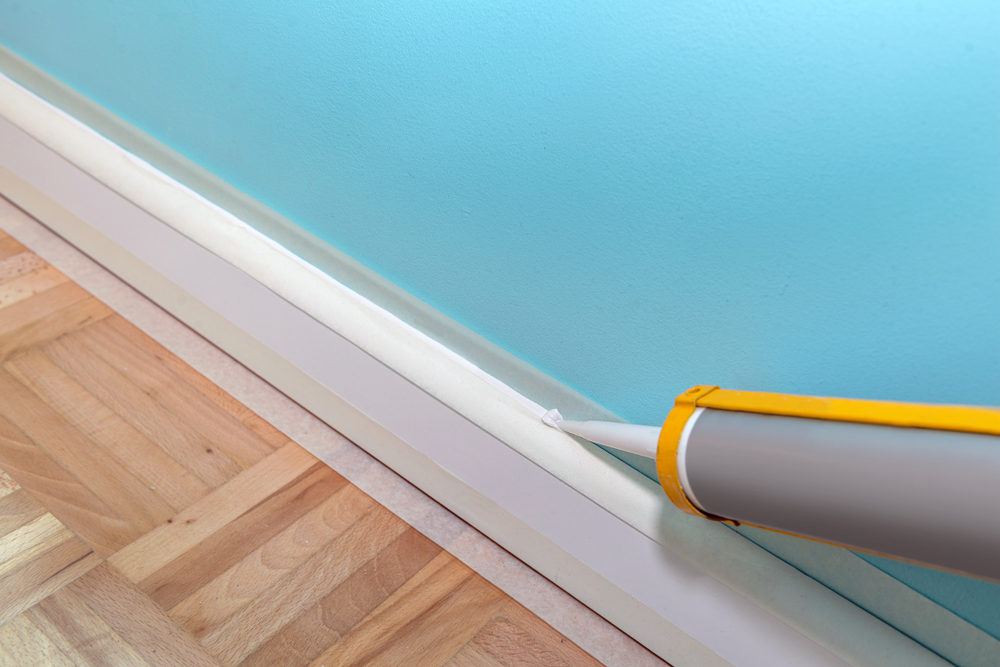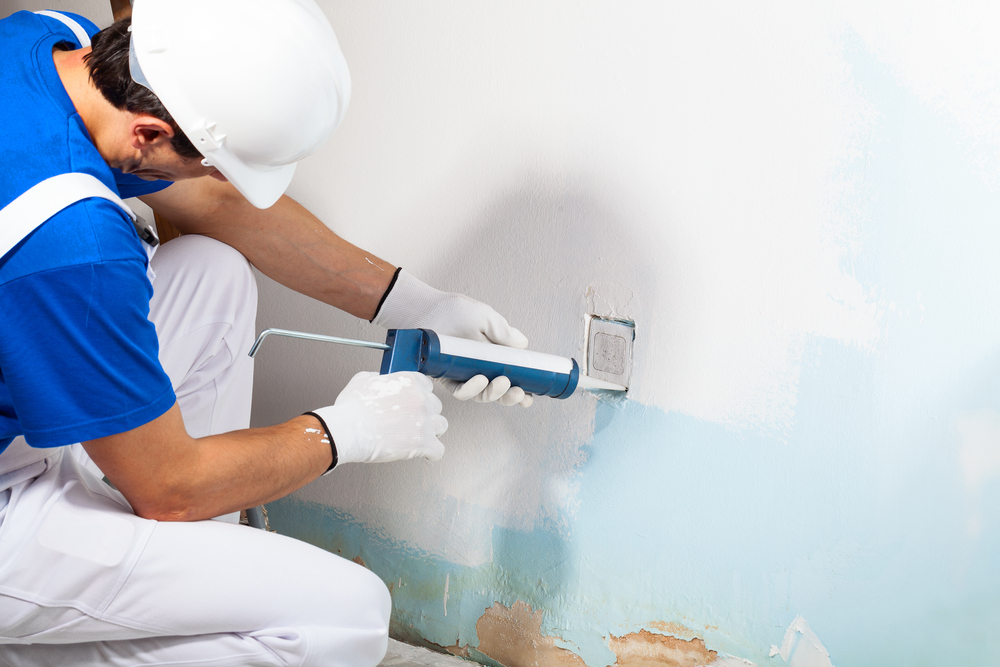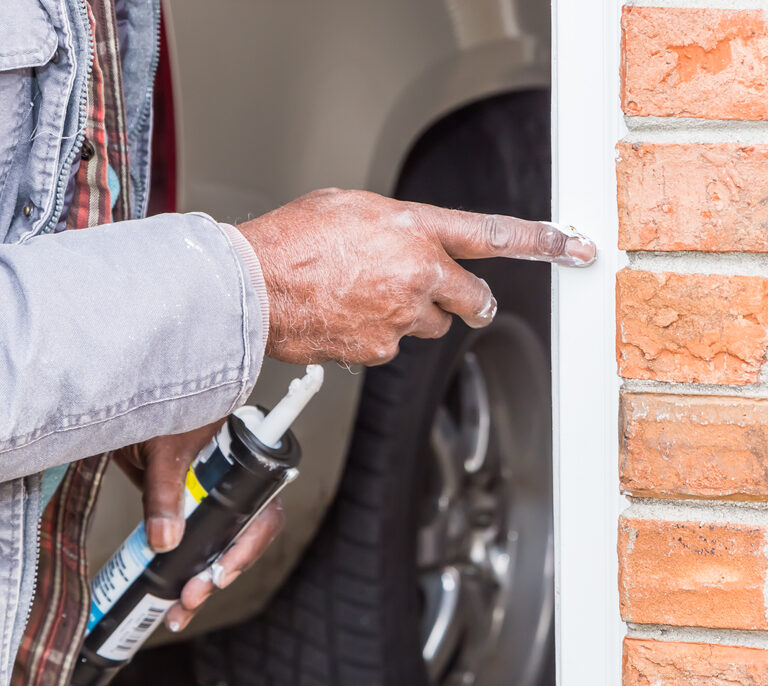Even the finest caulk will degrade over time, making mildew sprout from your grout and compromising its watertight seal. What’s more, you’ll be left with unsightly stains that spoil the aesthetics of your entire room, and the only way to rectify the issue will be to re-caulk it.
If you’re looking at re-caulking your kitchen or bathroom, you’re probably wondering how long it takes to dry. Or, more importantly, how long does caulk take to cure?
While caulk may dry to the touch in as little as 30 minutes, it could take anywhere from one to ten days to cure. The precise time depends on the temperature and humidity as well as the type of caulk used. We’ll give you all of the essential information you’ll need in this handy caulk-drying guide.
Dry Time vs. Cure Time: What’s the Difference?
Before you hop into your first shower post-caulking, you should understand the difference between drying and curing.
Dry time refers to how long it takes until the caulk has hardened to the touch. Once “dry,” the caulk will be rigid enough to touch without warping, so you can safely brush up against or walk on the area without worrying about spoiling your hard work. But dry caulk doesn’t mean you can start exposing the sealant to water.
Cured means the caulk has had sufficient time to set and is now fully waterproof. While you can walk on dry caulk, you can’t run water over it, or you’ll risk washing it away and damaging the joints. Only when the caulk has had time to cure should you start using your shower or backsplash as you usually would.
Given some types of caulk take up to ten days to cure, you should probably look for alternative arrangements in the interim.
How Different Caulk Types Affect Curing Time

Not all caulk dries and cures at the same rate—some types even take several times longer than others. We’ll run you through the three most common varieties of household caulk.
Silicone Caulk
Silicone caulk is especially effective on smooth, non-porous surfaces like metal, ceramic, and glass. The substance slips on easily then hardens to create a flexible and durable bond—perfect for a wide range of household applications. As silicone boasts impressive water-resistant properties, it’s the sealant of choice for the most water-prone regions of the home. On the downside, silicone is difficult to paint over because liquid tends to bead on the surface rather than seeping in. Opt for a special paintable silicone caulk when you want to add a splash of color.
If you’re in a rush, the good news is silicone hardens and cures quicker than other sealants.
- Gorilla Clear is a great silicone caulk.
Drying time: 3-12 hours
Curing time: 24 hours
Acrylic Latex Caulk
Acrylic latex is fantastic at filling in the gaps, particularly in porous materials such as wood. But this affordable and easy-to-paint sealant isn’t particularly waterproof; plan your application accordingly. However, some acrylic latex caulk products have a silicone additive to enhance durability and water resistance.
- DAP INC White Alex Plus is an excellent acrylic latex caulk.
Drying time: 1-3 hours
Curing time: 24 hours
Polyurethane Caulk
Polyurethane is the perfect caulk for outdoor use as it repels dirt and will retain its waterproof seal for many years to come. It’s also highly flexible and easy to paint over, making it a versatile option for various applications. The big downside to polyurethane-based caulks is they take much longer to cure—you could be waiting a week or more.
- Loctite is a powerful polyurethane-based caulk.
Drying time: 24 hours
Curing time: 3-10 days
A Warning About Fast-Drying Caulk Claims
You may have seen fast-drying silicone or acrylic latex caulk with an advertised dry time of an hour or less. But as always, you should treat such wild claims with a healthy dose of skepticism and double-check the fine print.
While the caulk could dry in less than one hour, that’ll probably only ever occur in ideal climatic conditions. If the temperature happens to hover within the perfect range and if you’ve got just the right amount of relative humidity, then the manufacturer’s claims could ring true.
But if not—which is the more likely scenario—then the caulk will take significantly longer to dry. To play it safe, allow substantially more time than the recommendations on the label (see our suggested times).
How to Speed up the Caulk Curing Time
If you’re in a hurry to use your freshly caulked area, there are a couple of neat tricks you can employ to expedite the curation time.
Acrylic latex dries when moisture evaporates from the surface, so switch on your dehumidifier or point a fan towards the caulk to speed things along.
If you’ve used a silicone-based product, you want to add extra humidity to the room because moisture helps the substance cure. You can’t splash water on the uncured caulk, though, as it’ll wash away your work; turn on your humidifier instead.
Polyurethane-based caulks are best left as is because any additional humidity or water will compromise the curation process.
Temperature also plays a pivotal role in how long it takes caulk to cure. The ideal range lies between 40°F and 80°F, so aim to do your caulking on a balmy day or set your thermostat accordingly.
If possible, avoid any major re-caulking projects during winter when living in a frigid northern state (unless you’ll be running the HVAC 24/7, that is). Sub-zero temperatures will cause latex to freeze, while the lack of humidity inhibits polyurethane from curing—neither product will yield good results if applied in the bitter cold.
Whatever you do, avoid trying to dry out the caulk with a hairdryer or heater as radiant heat can melt uncured caulk and ruin the bond.
Painting Over Uncured Caulk

You might still be able to splash on a fresh lick of paint if your caulk hasn’t quite yet cured.
If you’re on a tight schedule or you just want to start painting straight away, search for a caulk that has been specially formulated to cure underneath a coat of paint. That way, you can begin painting once the caulk is dry to the touch (usually within a few hours) rather than waiting for the product to cure.
Polyurethane-based caulk doesn’t come in any such formula, so you’ll need to wait the full curation time (up to 10 days). And remember: silicone is a pain to paint over, so opt for acrylic latex instead.
In any case, read the manufacturer’s instructions carefully and remember to factor in temperature and humidity when evaluating the appropriate drying time.
- DAP Alex Painter’s is an outstanding paintable caulk.
The Pitfalls of Using Old Caulk
Chances are you’ve got some old sealant somewhere in the garage from a previous caulking project. While it might be tempting to dig it out to save on buying a whole new tube, it’s probably not a good idea. Old caulk won’t bond properly, and you’ll be forced to do the entire project again.
All types of caulk will eventually expire, even if left inside the sealed tube and never opened. Check the manufacturer’s label for an expiration date and toss out any caulk that’s past its prime. If you feel an unused tube is still up to the task, test it first by squeezing out a line onto a solid surface. The substance will develop a firm skin within 30 minutes if it’s still fresh enough to use.
How Long Does Caulk Take To Dry: Final Thoughts
While some types of caulk can dry to the touch in as little as 30 minutes, you need to wait until it’s fully cured before you can start splashing water around the place. The time it takes for caulk to cure varies from a few hours to 10 days—and we’ve given you all the relevant variables in this caulk dry-time guide.
